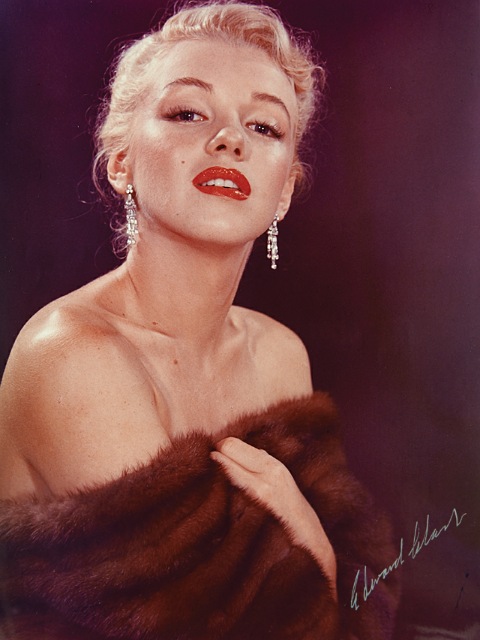
All About Eve gets an outdoor screening in the spectacular setting of the Hollywood Forever Cemetery next Saturday, September 14, as part of the Cinespia summer season. Tickets cost $18 and gates open at 6:15 pm, for an 8 pm showing.
Marilyn Monroe 1926-1962

All About Eve gets an outdoor screening in the spectacular setting of the Hollywood Forever Cemetery next Saturday, September 14, as part of the Cinespia summer season. Tickets cost $18 and gates open at 6:15 pm, for an 8 pm showing.

There are so many photos of Marilyn reading, you could fill a book with them. So it’s not surprising this classic 1951 photo of Marilyn reading at home was selected to grace the cover of the newly-published The Hollywood Book Club: Reading With the Stars. This lovely hardback, measuring a compact 21 cm squared and with text by Steven Rea, also features black-and-white images of some of Marilyn’s friends and co-stars reading (including Sammy Davis Jr, Lauren Bacall, Jack Benny, Marlon Brando, Bette Davis, Dorothy Dandridge, Ginger Rogers, Claudette Colbert and many more.)

Shirley MacLaine is also pictured reading in What a Way to Go! (1964), a film originally planned for Marilyn. A selection of photos from the book was posted in the Evening Standard this week. It would make a great stocking filler for the cinephile/bibliophile in your life – or if you can’t wait, just treat yourself!

Carol Ann Jones was born in Manhattan and worked as a child model, making the cover of LIFE magazine at fifteen. She made her Broadway debut as Carol Lynley in The Potting Shed (1957), which also starred Dame Sybil Thorndike (fresh from co-starring with Marilyn Monroe in The Prince and the Showgirl.)
Carol went on to play the lead in Blue Denim (1958), a teen drama directed by Joshua Logan (who had made Bus Stop with Monroe two years previously.) The play deals with themes of unwanted pregnancy and abortion (which was then illegal in the US.) Carol would reprise her role in the 1960 movie of the same name, produced by Twentieth Century Fox, with Macdonald Carey among the cast. (Carey had worked with Marilyn in Let’s Make It Legal back in 1951.) Blue Denim earned Carol a second Golden Globe nominations as Most Promising Newcomer, having first been nominated for The Light in the Forest (1958.)
In 1960, the eighteen-year-old Carol married Michael Selsman, who was six years her senior and a publicist for the Arthur P. Jacobs Agency, who also represented Monroe. Selsman occasionally worked with Marilyn when Pat Newcomb was unavailable. In November 1961, he drove with Carol to Marilyn’s Doheny Drive apartment.
Marilyn was then 34 years old, and in the process of approving images from her photo shoot with Douglas Kirkland for Look magazine. As Selsman told biographer Michelle Morgan, she refused to let Carol come inside although she was heavily pregnant. This seems rather selfish and uncaring, but it’s possible that Marilyn distrusted the blonde starlet, sixteen years her junior and also under contract at Fox. Or perhaps she simply wanted to continue her work without interruptions. (Carol never commented on the story, so we have only Selsman’s word to go by.)
Their daughter Jill was born shortly afterwards. Carol worked both in television, and movies such as Return to Peyton Place (1961), and The Last Sunset, opposite Marilyn’s Niagara co-star, Joseph Cotten.
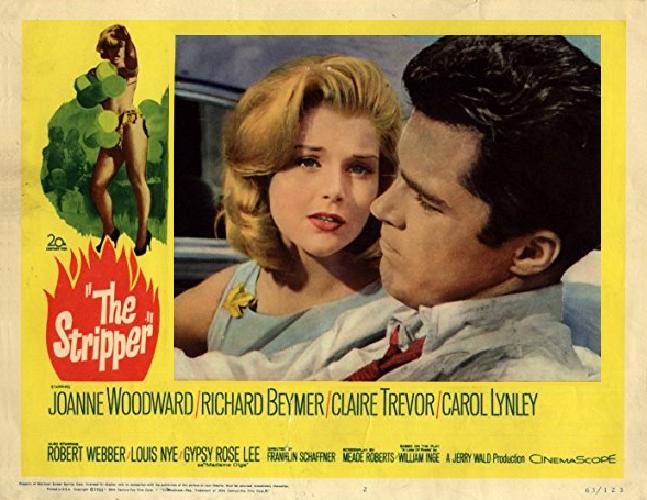
In 1963, Carol appeared in The Stripper (known in the UK as A Woman of Summer.) Adapted from William Inge’s play, A Loss Of Roses, it was originally pitched to Marilyn, but after her death in 1962, Joanne Woodard took her place as Lila, a former burlesque star who falls in love with a much younger man, Kenny (played by Richard Beymer, this was a role first offered to Warren Beatty.) Carol Lynley played Miriam Caswell, Kenny’s girlfriend and Lila’s unwitting rival. (Another curious coincidence: Marilyn had played Claudia Caswell in All About Eve, her breakthrough role at Fox.)
In 1963, Carol starred with one of Marilyn’s favourite leading men, Jack Lemmon, in a romantic comedy, Under the Yum Yum Tree. Also that year, Carol worked with one of Marilyn’s least favourite directors, Otto Preminger, in The Cardinal. John Huston, who had directed Marilyn twice, also acted in the movie, as did Tom Tryon, previously cast as Marilyn’s desert island companion in the shelved Something’s Got to Give.
Carol divorced Selsman in 1964, and later had a long affair with the British newscaster, David Frost. She starred alongside Lauren Bacall in the controversial Shock Treatment (1964.) This was followed by The Pleasure Seekers, pitting Carol with two other young beauties, Ann-Margret and Pamela Tiffin, and directed by Jean Negulesco (of How to Marry a Millionaire fame.)
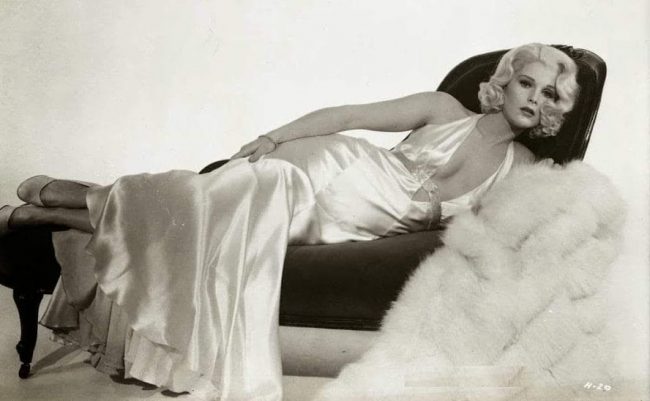
Marilyn Monroe had once considered playing Jean Harlow in a biopic. It never came to pass, but in 1965 Carol starred as the original ‘platinum blonde’ in the low-budget indie, Harlow, shot over eight days, and with Ginger Rogers playing the domineering ‘Mother Jean’. The film was overshadowed by Paramount’s rival Harlow, starring Carroll Baker and released a month later. Neither were well-received, and the bizarre saga is recounted in Tom Lisanti’s 2011 book, Duelling Harlows: Race to the Silver Screen. (Carol also posed nude for Playboy that year.)
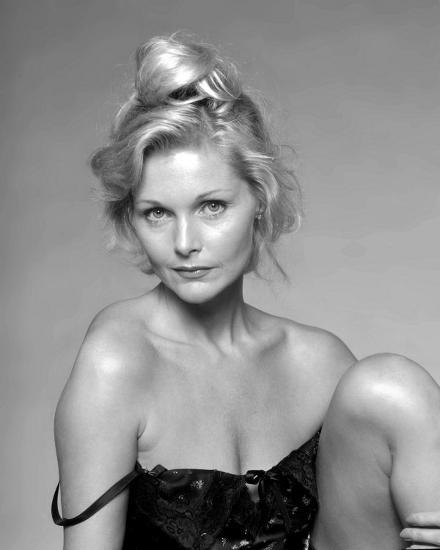
Carol’s next performance, as a young mother in Preminger’s Bunny Lake Is Missing, was one of her best. Her co-star was Sir Laurence Olivier, and she more than held her own. She then starred in The Shuttered Room and Danger Route (1967), Norwood (1970), and Cotter (1973), with Don Murray. Her greatest success was in The Poseidon Adventure (1972.)
For the rest of her career Carol worked mainly in television, making several TV movies and appearing in Alfred Hitchcock Presents, The Man From U.N.C.L.E., The Big Valley, Mannix, Quincy M.E., Kojak, Hawaii Five-O, The Love Boat, Charlie’s Angels, Hart to Hart, Hotel, and Fantasy Island. Her final short film, Vic, was released in 2006. Carol Lynley died aged 77 of a heart attack at home in Pacific Palisades, California on September 3, 2019.
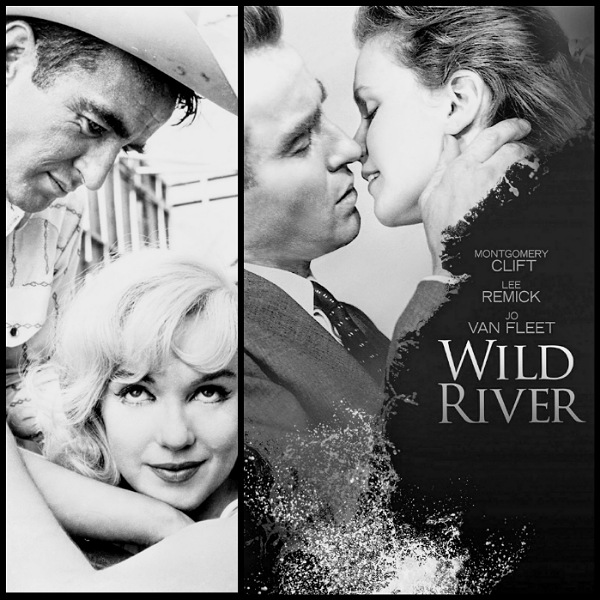
At 83, Bruce Dern is one of Hollywood’s most enduring character actors, with a career spanning almost 60 years. In 2013, he spoke about meeting Marilyn at the Actors Studio, and her advice that success would come to him in later life (see here.) Now in an interview for the New York Post, Dern describes a conversation with Marilyn before he made his big-screen debut in 1960; and while his recollection probably isn’t verbatim – I doubt she used the word ‘wunderkind’, or that she would have made cutting remarks about her husband with a passing acquaintance – it does shed light on a film Marilyn almost made with Dern (and her fragility certainly rings true. )
“I’m sitting in the back row my second day at the Actors Studio, and just before the session starts, this woman comes in with a yellow babushka over her head and sits down next to me.
‘You’re Gadge’s new wunderkind,’ she says — Gadge was Mr. [Elia] Kazan’s nickname. ‘The movie you’re gonna do, Wild River, I was gonna do — but I have to do this dumb movie my husband wrote, so they gave it to Lee Remick.’
Marilyn’s husband was Arthur Miller, the movie she was doing was The Misfits, and the star was Clark f - - king Gable. ‘What if he doesn’t like me?’ she asked. ‘He’s the biggest star that ever lived!’
She was as fragile as anyone I’ve ever seen in show business.”
Wild River was a Twentieth Century Fox production, directed by Elia Kazan and starring Montgomery Clift as an official from the Tennessee Valley Authority who tries to persuade an old woman to give up her home to build a hydroelectric dam on her land. He also becomes involved with her granddaughter Ella (Remick.) Bruce Dern played a small, uncredited role as a TVA agent (see inset, below.)
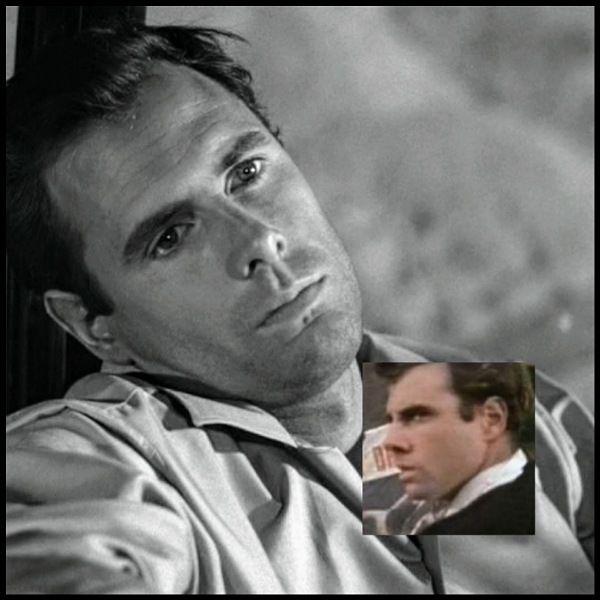
Marilyn was indeed committed to The Misfits, but it was Kazan who chose Lee Remick to play the lead – perhaps because sensing that his past relationship with Marilyn, and his falling out with Miller would cause conflict. Wild River was a good film, but a less glamorous role than Marilyn usually played, and arguably more suited to Remick.
Marilyn was still contracted to Fox, although she hadn’t worked there since 1956. After losing Wild River, she starred in the lightweight musical, Let’s Make Love, at Fox instead, before making The Misfits independently. Whatever her misgivings, The Misfits was probably a better fit for Marilyn than Wild River, and she finally got to co-star with her friend, Montgomery Clift.
Lee Remick was briefly set to replace Marilyn in the ill-fated Something’s Got to Give (1962), and would go on to narrate a 1987 documentary, Remembering Marilyn. Meanwhile, Miller and Kazan were finally reconciled (with Marilyn’s support), and later collaborated on After the Fall (1964), Miller’s autobiographical play in which Kazan’s wife, Barbara Loden (who had also appeared in Wild River), played a character based on Marilyn.

In 2012, Marilyn was the face of Cannes – and the Champs-Élysées Film Festival uses images of her every year. Now her star will shine over the Middle East, as The 961 reports. (With an impersonator striking a classic Seven Year Itch pose, the LIFF artwork seems inspired by LIFE magazine.)
“Believing that art should have a certain message, the Lebanese International Film Festival (LIFF) chose to fight against the stigma that is attached to mental health issues by collaborating with Embrace, the leading organization that raises awareness about mental issues.
For that particular reason, LIFF opted this year for the image of the iconic renowned superstar Marilyn Monroe as she is an ideal example of a successful woman that was fighting her own battle with mental health. ”